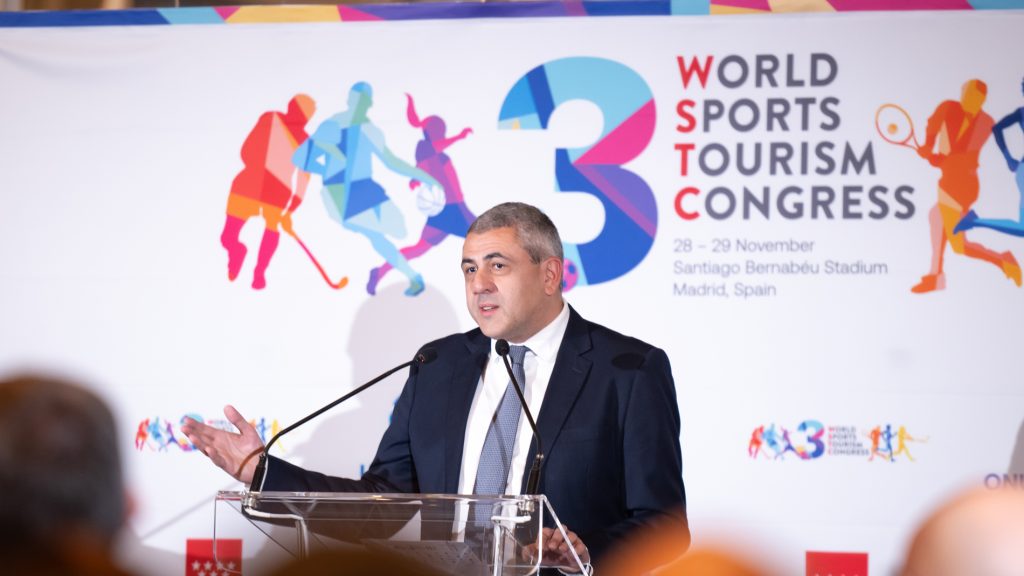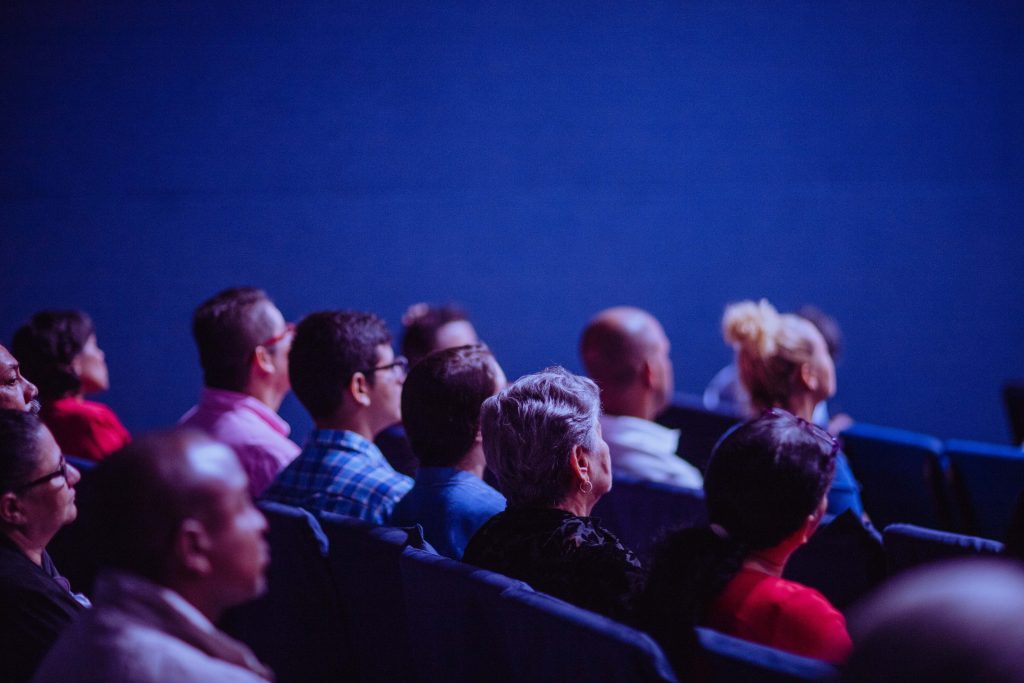
Share news
Listen
What part of the setup is handled from the CdS team, and what part is in the hands of local players?
We handle in house the whole project; we only hire local professionals individually to help implement the project and complement our team, but we do not hire companies of contractors otherwise than for heavy machinery equipment.. We want to fully control the process, so we need to have our team responsible for each module (the main ones are plumbing; electricity and air conditioning; tent building; security…). They have this responsibility in two main moments: during setup, and during the shows.
How long does setup take?
Usually 10 days for setup and three for tear down. It is very short. 130 people are involved in this process. One detail: we don´t have temporary hosting structures, as no one lives on-site, unlike traditional circuses, so they stay in hotels or apartments. This is better for security, for comfort, for management, for licenses (not having a fixed place to stay can make visas more difficult).
What are the most serious risks you are looking at? It looks like evacuation is always the most serious one…
Almost all risks would lead to evacuation, hence its importance. The best way to avoid a problem is simply to not be in the tent, so you have to ensure that if there is any problem, you can take everyone out of the tent, but also out of the site, quickly. We can evacuate a 2,000 people tent in 2 minutes and 13 seconds.
Of course evacuation time is theoretical and based on crowd speed in specific aisles widths. We had simulations of evacuating the tent, in Montreal using only 5 doors out of 10: and obtained quite good results on egress time. We also have to know that safety codes take in account that one or several of the doors may be blocked by the problem causing the evacuation. This is why the number of persons evacuated for every exit is based on a 50% ratio, to accommodate overcapacity at each other egress door.
Fire is not a very high risk?
It is for regulation which was defined a long time ago, and it is often for people who have to check our work… but times have changed! Regulation was defined first in the 1940, when there was straw on the floor, the tent was made of cloth, made waterproof with tar… So you can understand these risks are not very serious anymore. If there is a fire, the tent will open up as the plastic cloth will melt without any fire drops dripping, and this would solve most of the risk, as people usually die choking with the smoke, not burnt by the fire. Also we don´t have any inflammable materials inside.
Other risks: electricity? a fall of the tent?
Not really. Electrical connections are out of reach. Generators are outside and well protected, and we try to use public electricity whenever possible. And regarding a fall of the structure, even if there is canvases, it would not fall. Each structural piece is firmly tied on several ends…
What scares me most is the wind. Tents often fly off. These days for that, we calculate the necessary attachments to the ground very thoroughly. We prepare the ground; we never ever install a tent on grass, we would put asphalt or special compacted re enforcement if we had to setup on a place with just soil.
What resistance to wind do your tents have?
We are OK until 120km/h… but we would evacuate at a lower speed: 80km/h. We monitor this risk having a weather control station on-site, plus being in contact with official weather stations, so we can see the risk coming.
The law doesn´t specify how to tie the tent to the floor. It just says what resistance the tent should have, and an inspector has to validate the solidity of the structure.
Are there any new risks you have to manage?
One new risk is what can happen close to the site, like a bomb spreading panic. We are now updating our processes to integrate this risk, which is becoming sadly frequent.
You work in many countries. Is regulation a challenge?
It can be, let me explain. The law what applies is often the law on permanent structures. It is the case for Spain with the CET (Código Técnico de la Edificación). And this is obviously a challenge. For instance, Chicago is very windy so the law requires us to resist to winds of 160km/h when obviously this is necessary for a permanent building, but not so for a temporary structure which you can take off.
In Europe there is a common specification for the “structural” part of temporary structures; what is still local and often not suitable is what is inside the structure, like security, evacuation norms… But we regularly work with the authorities to help define the necessary evolution of the norms. For instance, in the USA, the code (NFPA) is being updated, I participate in the committee which defines the new norm on egress, but this will still take years to be defined and validated.
Regulation-wise, Spain is in the same situation as other countries. The problem is not so much in the regulation as in the interpretation of the regulation. As any law, you can interpret it in a strict sense, or in a pragmatic sense. The problem is when the person checking your work does not try to understand what is done and its consequences, but just rigidly read the law, without taking care of the specific nature of ours installations.
In all regulations, the first part explains the scope of the regulation, how to attain the minimum level of security. But it is always possible to attain it and even to exceed it. Let me explain how regulation has to be handled intelligently. In many countries the law limits the number of seats we can have on one row. The problem is that these limits are calculated based on a 30cm distance between rows, which creates a “swinging” effect which slows down evacuation. We have 55 to 60cm distance between rows, and we calculated that thanks to that we can evacuate safely rows of up to 100 seats without a problem. With this higher distance, people can exit much faster. So we just ask to have rows of 35 seats, which is still much safer than what most countries demand… We often have to work with local authorities to show them our system is safer than what requires the local law, even if our rows have more seats.
Another problem is that each country, and often each region within a country, has its own norms. In Spain there are four different norms depending on the region. In the US, I have to validate my structures for each state individually!
And let me give you another example of regulation issue: in an Asian country, we occupied the space for 93 days, and their law says that if you stay for more than 90 days, you are a permanent structure, so you need the attributes of a proper building, like foundations. We had to work with them to explain that the risk was different from that of a temporary structure.
You also handle accessibility for people in wheelchairs, for instance…
Yes, we have evolved for quite a few years now; accessibility is getting more important with an ageing population. In the USA, they are very demanding in that respect. Australia and France now also have a complete regulation.
Accessibility is a factor which we have to deal with more and more and in every country. Spain is not very restrictive on this point but we can see it is coming. Let´s hope new standards will consider what has been done before in other countries.
But you can see regulation can be a challenge: in the US, we need a slope of maximum 1/12. In Australia, they then defined a slope of maximum 1/14 which makes the ramp much longer. Changing the ramps would have cost us 780,000USD… but a bigger problem was that then, the ramps would have blocked the firemen accesses roads. And in some country these accessibility laws usually state that if installing the ramps is not applicable, it can´t be requested. So we worked with the authorities to show them our ramps were perfectly practical, and we kept them.
How do you handle setting up and tearing down? How do you make sure no one relaxes after so many tours?
There is a tour manager, a site manager and a tent master for each site… each one will produce reports having to show how rigorous the management of everything involving security has been. And it is a constant effort. For instance, at each teardown, and then again when we reach the next location, all the equipment is checked, cables and structures. In addition all structural equipment is completely re certified every three years by an engineering specialist firm.
We do a lot also to manage insurance, to have the possibility to show that we do much more than the law requires. For instance, we measure with a luxmetre the light at floor level, to ensure we reach the minimum required for security, which is also useful for insurance, in case we have to prove we have provided the right safe environment.
Is panic a big problem?
Strangely, and unlike the cliché, the risk is not so much that people trample over each other; this usually does not happen. On the contrary, they tend to help each other, to find solutions, even if it means they will take longer to exit.
When people are crashed (in a concert, for instance), it is not the result of panic and selfishness, but of an accumulation of weight and inertia when everyone is pushed in the same direction.
Who is involved in the security? Who do you brief?
The whole team, clearly, including the ushers and the artists. We have defined what has to be done if something happens at any point of the show. If an artist is hanging up and something happens, we have defined what each of the other artists has to do. Our whole team are security agents, if there is a problem!











